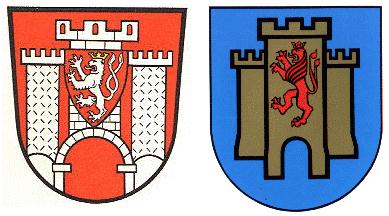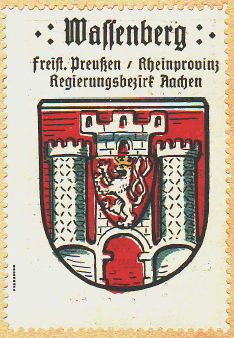Wassenberg: Difference between revisions
Knorrepoes (talk | contribs) m (Text replacement - "{{de}}" to "") |
Knorrepoes (talk | contribs) m (Text replacement - "{| class="wikitable"↵|+Official blazon↵|-↵|'''German'''↵| ↵|-↵|'''English''' ↵| {{blazon wanted}}↵|}" to "{| class="wikitable" |+Official blazon |- |'''German''' | blazon wanted |- |'''English''' | blazon wanted |}") |
||
| Line 13: | Line 13: | ||
|- | |- | ||
|'''German''' | |'''German''' | ||
| | | blazon wanted | ||
|- | |- | ||
|'''English''' | |'''English''' | ||
| | | blazon wanted | ||
|} | |} | ||
Revision as of 09:20, 6 April 2023
WASSENBERG
State : Nordrhein-Westfalen
District (Kreis) : Heinsberg (until 1972 Selfkantkreis)
Additions : 1972 Birgelen, Effeld, Myhl, Ophoven, Orsbeck
| German | blazon wanted |
| English | blazon wanted |
Origin/meaning
Wassenberg developed around a castle of the same name of the Lords of Wassenberg, a branch of the Dukes of Limburg. Around 1250 it received city rights. The arms are derived from the oldest seal, dating from 1273 and show a castle and the small shield with the arms of the Lords of Wassenberg, i.e. the lion of Limburg, in opposite colours. Another old seal, dating from around 1300, only shows the lion. The colours of the field and castle are taken from the colours of the small shield.
The new arms (right) were granted on August 21, 1974 and are based on the old arms. The colours of the filed and castle are taken from the colours of Geldern and due to the heraldic rule of tincture, the colour of the lion had to be red as silver was not possible.
| The arms by Hupp in the Kaffee Hag albums +/- 1925 |
Literature: Stadler, 1964-1971, 8 volumes.

